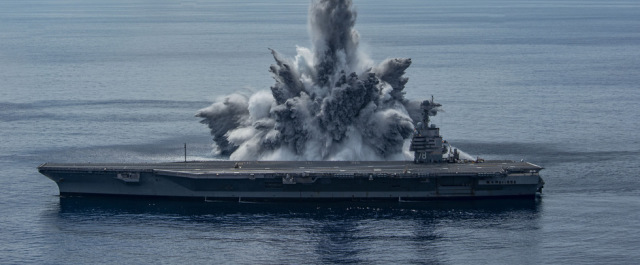The new type of American aircraft carriers is much stronger than its predecessors. Yesterday, on August 9, the press service of the US Navy announced the third and final test of the USS Gerald R. Ford as part of the FSST program.
The third explosion took place off the coast of St. Augustine Beach (Florida). Like the previous two, it involved detonating a warhead with a capacity of 18 tons in TNT equivalent, but even closer to the side of the ship. The explosion was registered as an earthquake of 3.9 magnitude, but the commander of the ship said that it caused less damage than expected.
The third stage of the FSST tests of the aircraft carrier USS Gerald R. Ford
"There are thousands of sensors on board the ship that help the crew monitor the state of the systems, and thousands more have been added for shock tests. There were no fires, no flooding, no serious injuries, " said the captain of the aircraft carrier USS Gerald R. Ford, Paul Lanzilotta. During the tests, about 3,000 sailors and a special test team were on the ship.
Back in 2019, it was calculated that the USS Gerald R. Ford would receive 50% less damage during FSST tests than the aircraft carrier Theodore Roosevelt of the Nimitz type (it passed explosive tests in 1987). After the second stage of the FSST, this forecast was improved, and at the end of the third stage, it surpassed the new strength indicators.

